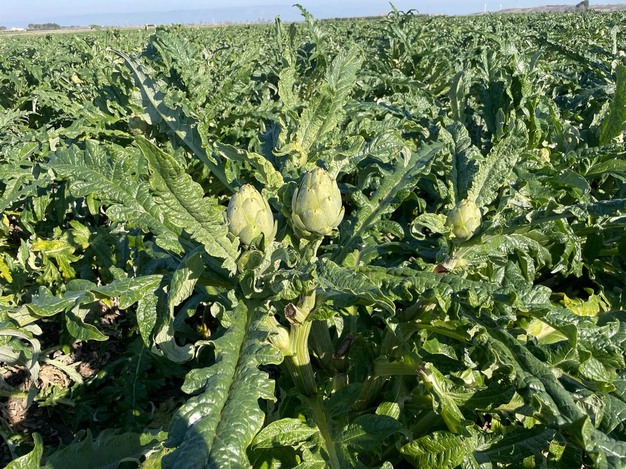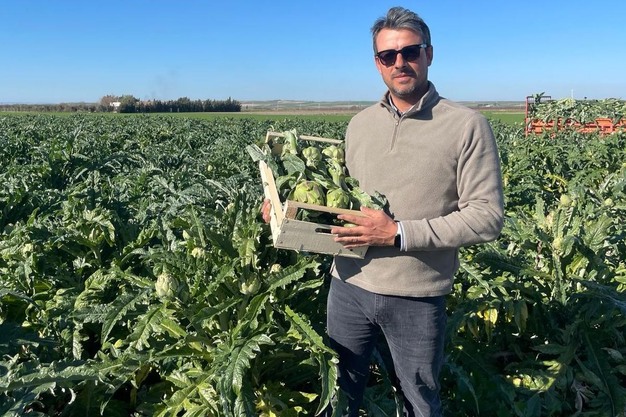In the last few days we have seen an increase in the quantities of Apulian artichokes available and a slight decrease in their prices. This is due to the fact that the higher than average seasonal temperatures are causing the plant to produce more flower heads, after a long period during which the yield was reduced by up to 70%.
 Madrigal variety artichokes
Madrigal variety artichokes
"Last week we had highs of up to 20°C," says Leonardo Cedola, owner of the eponymous farm in Lucera (Foggia). With this unusual and mild autumn and winter climate, artichoke farms can produce around 7000 to 8000 plants per hectare, almost twice the number produced in the same period of a normal season. If in the last decade January prices were around 0.32/0.35€/head, they are now below 0.30€/head. The commercial trend seems to be satisfactory and profitable, in spite of the fact that the weather conditions have not been favorable to the consumption of this type of vegetable so far. However, we feel lucky because the situation is very different from the one in 2023, when, due to a series of agronomic and market problems, we had to abandon our fields with prices of only €0.10 per head."
 Leonardo Cedola
Leonardo Cedola
Cedola will end its artichokes campaign in May. We are currently producing on eight hectares," he says. The artichokes are of good quality and size. We have much more to harvest; we just hope that importing from North Africa will allow us to keep going in the coming months. The biggest problem is still the increased cost of production. This is also due to the emergency irrigation because of the lack of rain. The few approved pesticides that remain on the market are very expensive. Fertilizers are the only ones that have seen a slight decrease, but they are still far from pre-covid-19 prices."
